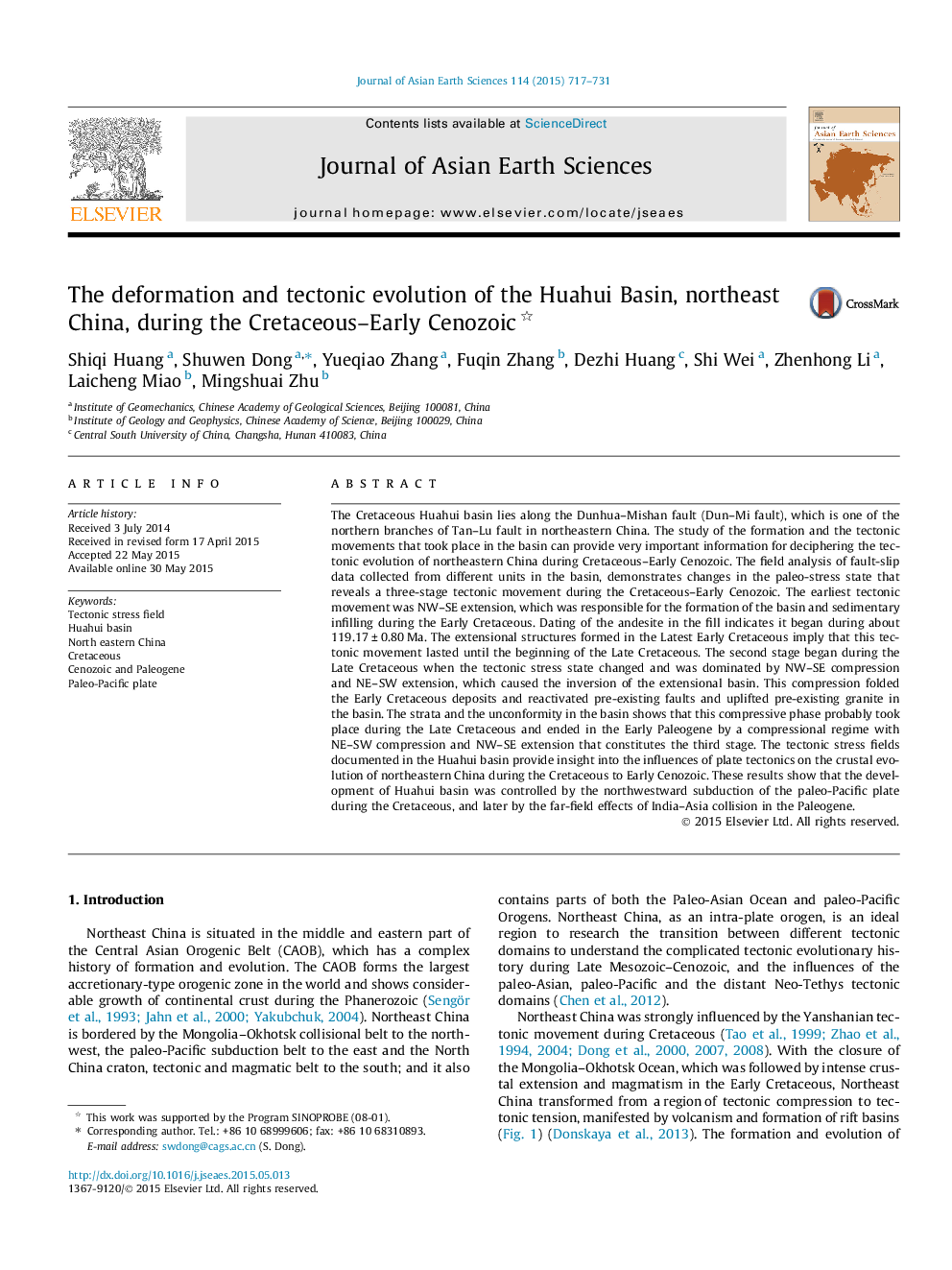| کد مقاله | کد نشریه | سال انتشار | مقاله انگلیسی | نسخه تمام متن |
|---|---|---|---|---|
| 4730089 | 1356735 | 2015 | 15 صفحه PDF | دانلود رایگان |

• A three-stage tectonic movement is revealed in the Huahui basin.
• The onset time of crustal extension of the Huahui basin was about 120 Ma ago.
• The subduction/collision of the paleo-plates might control the tectonic movement.
The Cretaceous Huahui basin lies along the Dunhua–Mishan fault (Dun–Mi fault), which is one of the northern branches of Tan–Lu fault in northeastern China. The study of the formation and the tectonic movements that took place in the basin can provide very important information for deciphering the tectonic evolution of northeastern China during Cretaceous–Early Cenozoic. The field analysis of fault-slip data collected from different units in the basin, demonstrates changes in the paleo-stress state that reveals a three-stage tectonic movement during the Cretaceous–Early Cenozoic. The earliest tectonic movement was NW–SE extension, which was responsible for the formation of the basin and sedimentary infilling during the Early Cretaceous. Dating of the andesite in the fill indicates it began during about 119.17 ± 0.80 Ma. The extensional structures formed in the Latest Early Cretaceous imply that this tectonic movement lasted until the beginning of the Late Cretaceous. The second stage began during the Late Cretaceous when the tectonic stress state changed and was dominated by NW–SE compression and NE–SW extension, which caused the inversion of the extensional basin. This compression folded the Early Cretaceous deposits and reactivated pre-existing faults and uplifted pre-existing granite in the basin. The strata and the unconformity in the basin shows that this compressive phase probably took place during the Late Cretaceous and ended in the Early Paleogene by a compressional regime with NE–SW compression and NW–SE extension that constitutes the third stage. The tectonic stress fields documented in the Huahui basin provide insight into the influences of plate tectonics on the crustal evolution of northeastern China during the Cretaceous to Early Cenozoic. These results show that the development of Huahui basin was controlled by the northwestward subduction of the paleo-Pacific plate during the Cretaceous, and later by the far-field effects of India–Asia collision in the Paleogene.
Journal: Journal of Asian Earth Sciences - Volume 114, Part 4, 15 December 2015, Pages 717–731